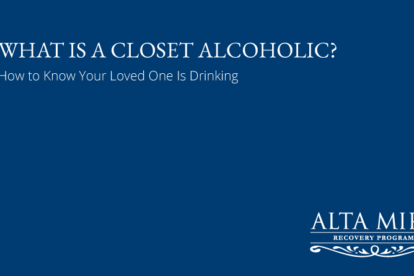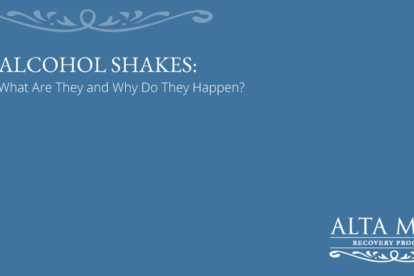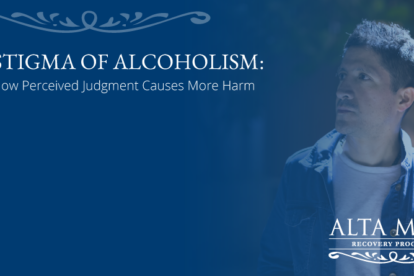Chronic Relapse Prevention and the Value of Long-Term Addiction Treatment

Chronic relapse prevention often requires long-term treatment to offer renewed hope of recovery. By understanding treatment duration, the impact of detox on diagnosis, the purpose of treatment, and the value of continuing care, you can move toward getting the care you need to find lasting freedom from addiction.
Maia Szalavitz still has scars. For 30 years they have marked her body, created by endless injections of heroin and cocaine in the 1980s when she was attending Columbia University. “I kept using, even after I was suspended from school, after I overdosed,” she writes. As Maia teetered on the brink of self-destruction, her parents were left heartbroken.
“They couldn’t understand what had happened to their ‘gifted’ child who had always excelled academically. They kept hoping I would somehow just stop, even though every time I tried to quit, I relapsed within months. [But] for me, heroin provided a sense of comfort, safety, and love I couldn’t get from other people. Once I’d experience the relief heroin gave me, I felt as though I couldn’t survive without it.”
Even when she began to recognize that drugs were destroying her, she kept going back.
Maia’s experience with chronic relapse is a familiar tale to many struggling with addiction. Although, for some, short-lived relapse can be a natural part of recovery, for chronic relapsers it goes beyond being an expected step in the healing process. Instead, abstinence and relapse form a vicious cycle that chips away at your hope each time you return to using. This may be especially true if you relapse despite participating in formal addiction treatment; if treatment fails you (or you fail treatment), why keep trying?
But relapse does not mean failure. Rather, relapse indicates that you have not yet participated in the type of care you need to truly free yourself from drugs. Often, one of the key pieces missing from treatment attempts is duration; for people who have experienced chronic relapse, short-term addiction treatment may simply not provide you with the opportunity to recover in a sustainable way because chronic relapse prevention requires long-term treatment.
Treatment Duration: How Long Is The Program?
Treatment programs for substance use disorders often vary in length depending on the individual’s needs and goals. Our program is designed to address the root causes behind your addiction, give you insight into yourself, and prepare you for a life in recovery. We do this through our 30-day inpatient program, and we also set you up with aftercare options.
The goal of this program is to ensure you have the support necessary to prevent a return to use. Substance use disorder is considered a mental health condition, and we understand that returning to use does happen. This is why our 30-day program is intensive and thorough, and you will have the knowledge of your disorder to prevent your triggers from causing a return to use.
The Impact of Detox
One of the reasons longer duration of care may lead to better outcomes is the role detox plays in the identification of client needs. Detoxing from any substances puts the brain through a stressful process of re-organization as it attempts to achieve equilibrium in the absence of substances of abuse. This leads to a host of withdrawal symptoms, both visible and invisible, which can cause disturbances in emotion, thought, and behavior. While medications are available to minimize withdrawal symptomsfrom certain drugs, it still takes time to achieve a state of stability once drug use has ceased.
Successful addiction treatment programs are personalized and designed for your individual needs. The volatility of the detox period can interfere with the psychological assessment process necessary to identify those needs. As such, it is vital that assessment happens over an extended period of time in order to minimize interference of withdrawal and allow for accurate assessment. This is particularly important in the presence of a co-occurring mental health disorder, the symptoms of which may be masked or mimicked by drug use or withdrawal. Because addiction and co-occurring mental health disorders must be treated simultaneously for the best outcomes, diagnostic clarity is imperative when designing effective treatment plans, and this clarity can only be achieved if you are able to participate in the diagnostic process without the influence of drugs or withdrawal.
The Purpose of Treatment
Drug addiction has primed the brain to seek out and compulsively use drugs in order to maintain its state of equilibrium. By activating the possibilities of neuroplasticity, the primary purpose of addiction treatment is to teach you the skills you need to abstain from drug use by replacing maladaptive patterns with new, healthy thoughts and behaviors. This must happen through insight-oriented, cognitive, and behavioral interventions that allow you to identify the root causes of your use, recognize triggers, cope with cravings, and learn how to deal with distress without using.
This process takes time; unlearning addiction is a serious endeavor that requires dedication and practice as you absorb and integrate new learning and ways of being. Linda Onken, chief of NIDA’s behavioral and integrative treatment branch, says:
The more you have a treatment that can help you become continuously abstinent, the better you do. You have to figure out how to be abstinent. You still have cravings. You still have friends offering you drugs. You have to figure out ways not to use. The longer you are able to do that, the more you are developing the skills to help you stay abstinent.
This is particularly true if you have experienced chronic relapse and question whether it is even possible to create a life without using; you need extra time not only to do the work of recovery, but also to believe that such work is possible.
However, the purpose of addiction treatment is not simply to get you off drugs in the immediate term. Rather, addiction treatment must seek to “return people to productive functioning in the family, workplace, and community.” In other words, treatment must not only teach you how to stop using drugs but also reconnect you to the larger world. This is vital in part because it allows you to create what Carl Hart, a neuroscientist at Columbia University, calls “competing reinforcers”—valuable alternatives to drugs. Not only can these competing reinforcers provide the experiences that many find attractive in drug use—joy, belonging, comfort—but they can also serve as motivation to resist drug use; they give you concrete reasons to not use. For people struggling with chronic relapse, long-term treatment gives you more time to imagine and create a life without drugs, one in which you can nourish yourself and your sobriety while expanding your capacity for love and giving you renewed purpose.
Integrated Treatment for Alcoholism & Co‑Occurring Disorders
The Value of Continuing Care for Chronic Relapse Prevention
Once you complete the 30-day residential program, you are not invincible to a return to use. Substance use disorder is chronic and requires lifelong management to maintain recovery. Residential treatment is only the first step in the process.
Moving forward, there are many options that serve as the next steps in the recovery process. Intensive outpatient programs, outpatient services, and support groups are vital, providing additional information and therapies that are conducive to return to use prevention. Your care team will guide you through this transition, offering resources and connecting you to further care.
Returning to use – whether for the first time or the fifth time – does not mean you failed recovery. It simply means that your treatment protocols need to be adjusted. There is no one-size-fits-all recovery plan, nor is there a manual to follow. Whether you need to enter back into a 30-day program or join additional support groups, there are options and ways to prevent another return to use from occurring.
Alta Mira offers a comprehensive suite of treatment programs for those living with a substance use disorder. Our world-renowned experts are highly trained in addiction medicine, providing both evidence-based therapies and holistic approaches. Our facility is peaceful and secluded, ensuring your privacy during your stay. Call us today at 866-922-1350 to learn more about our program offerings.
Alta Mira: Science-backed treatment, world-class care.






